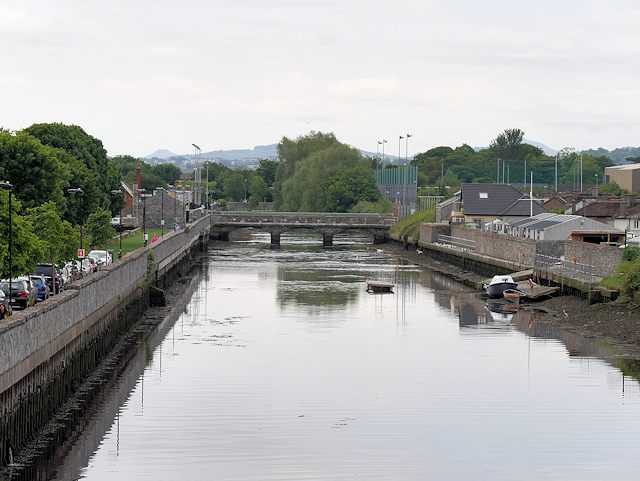Chapter Three
The Dodder Mystery took an unexpected twist on the next day Friday
September 13th when the body of Sergeant Hanily was discovered in
his lodging room of the barracks with his throat slit, having taken his own
life with a razor. Hanily who was single joined the DMP in 1881 and was
promoted to Sergeant in March 1884. At an inquest held the following morning
once again at the morgue on Londonbridge Road, the coroner was told that on the
previous morning Ellen Byrne, the barracks chef had delivered breakfast to the
Sergeant in his room in the station and he was quiet and in ‘a dull mood’.
At 10am he was called along with another Sergeant and a constable to Superintendent Whitaker’s office as there was an ongoing investigation in some lapses in record keeping at the station. His brother, who was visiting the city from his home in Ardagh, Longford deposed that his brother had told him during a visit earlier that week that he had been ‘knocked about by the Dodder business’ but the coroner was at pains to say that the only connection he knew that the Sergeant had with the case was the recovery of the body and the fact that he brought Margaret Clowry to the station in its aftermath. It was also stated that the Sergeant of recent weeks had become somewhat paranoid that someone at the station was trying to drug his food but even after a report was sent to the Dublin police commissioner there seemed to be nothing in the allegation.
Shortly after the meeting in the Superintendent’s office the dying
body of Hanily was found in his room. He had used his own razor to inflict a
deep fatal wound to his throat. He placed the razor back on a bedside cabinet.
A suicide note smeared in his blood was also found on the cabinet. In it he
said he could not ‘bear being watched anymore’ and ended the note with the
words ‘good bye’. A local priest Father Smith was called who delivered the last
rights but before the doctor arrived some fifteen minutes later, Hanily was
dead. The jury returned a verdict of having ‘committed suicide under temporary
insanity’. His body was released to his brother Michael and it was transported
to the Broadstone railway terminus and placed on a train to Roscommon where he
was buried near the village of Kilcock.
An inquest chaired once again by local coroner Christopher Friery was convened at Irishtown Barracks and following the sensation of the Dodder Mystery, this second inquest was a newspaper sensation. The jury of fifteen mostly local businessmen was gathered in the station, they included four local publicans Joseph Lenihan, Thomas Ryan, Nicholas Walsh and James Murtagh.
On Wednesday 14th September 1900, Flower’s trial began in
front of a jury of twenty three men. Flower decided against taking to the
witness box and instead a statement was read by his legal representative
Harrington. Before he refused to answer any questions that the coroner asked
including,
‘Tell me did you know Bridget Gannon?’
‘I did not’ he answered.
Harrington then read Flower’s statement to the jury.
‘7 Irishtown, August 24th 1900. I beg to report that
between 8 and 9 on the 22nd inst, I left this station off duty and
in plain clothes for a walk. I went along Sandymount Road as far as Sandymount
and returned by the Strand Road where I went into Walsh’s public house on Bath
Street to have a drink and there I met Constable Toal and Simpson 38E and 101E
about 8.30. We left about 10pm, I returning to my barracks. I know nothing
about either Miss Clowry or the deceased nor never saw them. ‘
To back up this version of events his fellow officer Constable
Simpson took to the stand and backed up Flower’s alibi by stating that he
Flower in the hallway of Walsh’s pub at about 9.30pm and then Nicholas Walsh
whose public house backed onto the barracks said that Flower was in his pub and
drank a pint of porter and a half of malt whiskey before leaving about 10.30.
According then to desk Sergeant Masterson, Flower returned to the barracks at
10.45pm.
The case continued on October 2nd as Flower appeared at the Southern Division Police Court and was remanded once again.
On Tuesday October 16th , at Green Street courthouse, Mr. Justice Gibson recounted the facts before the jury and at 2.35pm after fifteen
minutes deliberations concluded by saying that on the depositions as they stood
a petty jury could not convict on the charge to which Flower had been returned.
The Grand Jury threw out the charge and Flower was freed. Disgraced Flower left Ireland never to be
heard of again with rumours being that he immigrated to Australia. Margaret
married County Meath born James Brady in September 1904 only for James to pass
away just fifteen years later. But over forty years after the first news of the
Dodder Mystery emerged, Bridget Gannon’s good friend Margaret Clowry dictated
her dying statement and claimed that in fact it was she who had killed Bridget
and now Flower. But we may never know the truth to the unfortunate demise of
the young and beautiful Bridget Gannon.
Sources
Trevor James
Ken Harrington
The Irish Newspaper Archives
The National Archives of Ireland
The British Newspaper Archives
The Royal Irish Constabulary Forum
Garda Siochana Museum








No comments:
Post a Comment